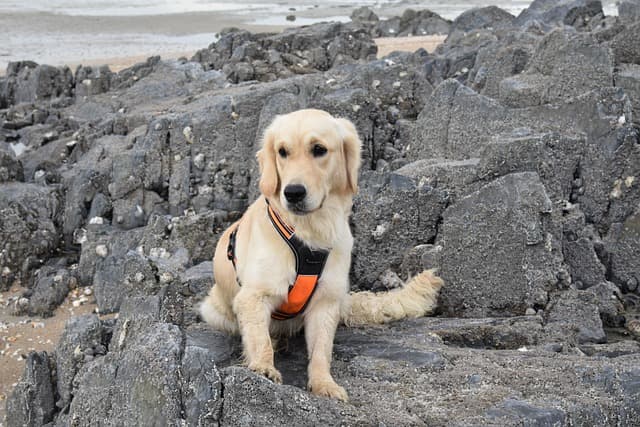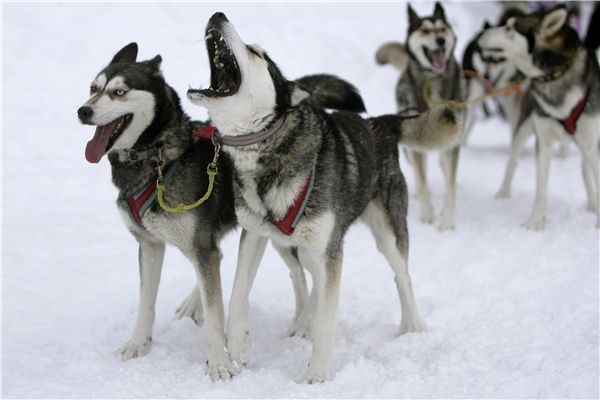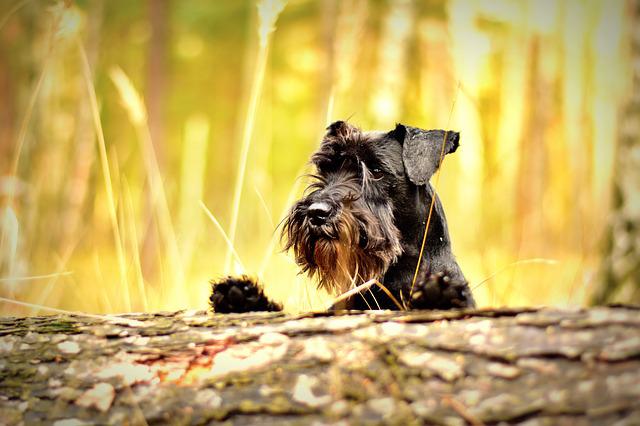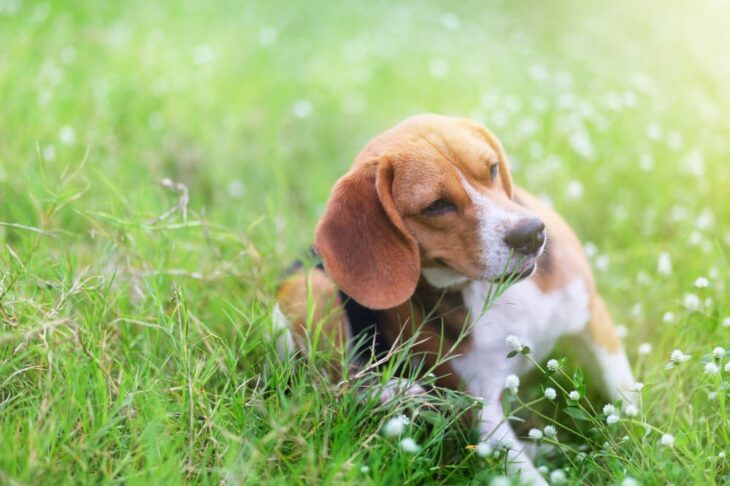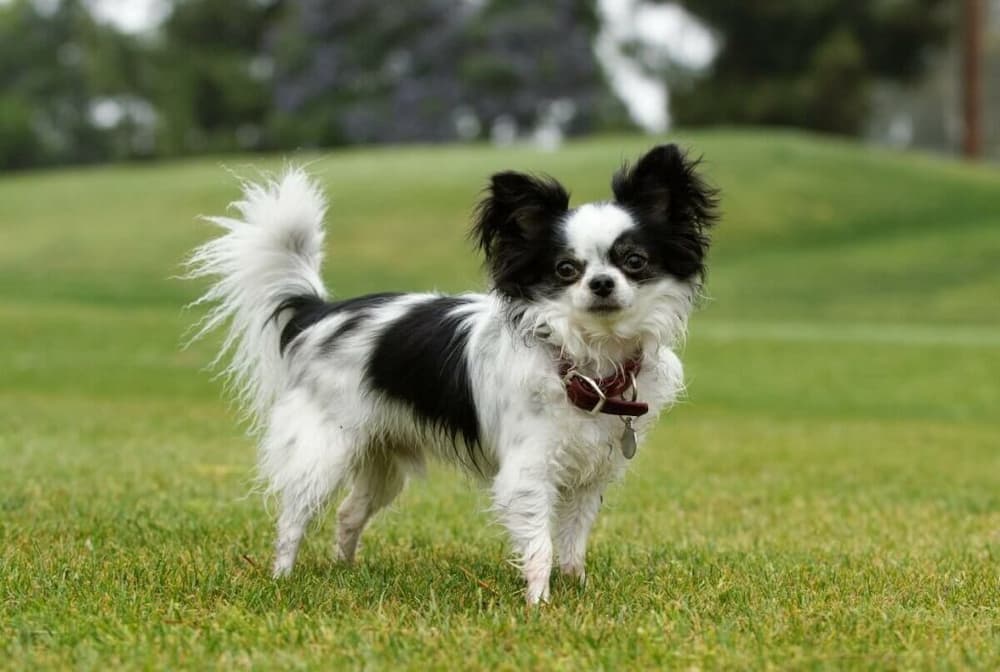
Chihuahua Breed Facts & Information: A Essential Guide
Chihuahuas are small, graceful dogs with terrier-like characteristics that weigh no more than 6 pounds. The rounded “apple” head is a breed hallmark. Sharp emotion can be read in the upright ears and full, luminous eyes. Coats come in a variety of hues and designs, and they can be long or short. The only difference between the varieties is the coat.
The tiny Chihuahua dog has a big personality. A national symbol of Mexico, these alert and amusing “purse dogs” stand among the oldest breeds of the Americas, with a heritage that dates back to the ancient pre-Columbian kingdoms.
Chihuahuas are loyal, charming, and have a big-dog attitude. Training is necessary for even the smallest dogs, and this cunning scamp will rule your home like a miniature Napoleon without it. Chihuahuas make excellent city pets because they are small and self-assured. Chihuahuas are adaptable as long as they get lots of quality time in their preferred lap. They are too small for roughhousing with children, and extra care must be taken in cold weather.
For more specific information, keep reading.
Table of Contents
History Of Chihuahua
Although there are two theories as to how the Chihuahua came to be, as with many breeds, his origins are unknown. The first is that he is a descendant of the Techichi, a dog native to Central or South America.
The Toltec civilization comes to mind when we consider the evidence that suggests the Chihuahua originated in Central and South America. There are Toltec carvings from the ninth century C.E. that depict a dog resembling the Chihuahua, which shares the same oversized ears and rounded head. Their function in Toltec society is unknown, and these dogs were known as Techichi.
The Techichi were assimilated into Aztec society after the Aztecs defeated the Toltecs. A lot of the dogs were used in Aztec rituals and lived in temples. The Techichi, according to the Aztecs, possessed mystical abilities, including the capacity to predict the future, heal disease, and safely transport the souls of the deceased to the underworld. It was common practice to execute a red Techichi and cremate him alongside the deceased. The Techichi were also a source of food and fur for the Aztecs. In the late 1500s, the Spanish subjugated the Aztecs, and the Techichi vanished into obscurity.
The second hypothesis holds that Spanish traders brought small, hairless dogs from China to Mexico, where they crossed them with small, indigenous dogs.
Regardless of which theory is true, the shorthaired Chihuahua that we know today was found in the 1850s in the Mexican state of Chihuahua, where he got his name. The little dogs were brought home by American tourists from Mexico. A Chihuahua named Midget was the first of his breed to be registered with the American Kennel Club in 1904 as they started being shown in 1890. Most likely, Papillons or Pomeranians were crossed to produce the longhaired variety. The breed experienced a surge in popularity in the 1930s and 1940s thanks to its association with dance legend and Latin music bandleader Xavier Cugat.
The Chihuahua has been one of the AKC’s most widely used breeds since the 1960s. Currently, they are ranked 11th out of the 155 breeds and varieties the AKC recognizes.
Appearance Of Chihuahua
When it comes to Chihuahua appearance, variety is key. The two primary coat varieties are long and smooth. A ruff of thick, longer hair at the neck and a shiny, close-fitting coat describe a smooth coat. Long coats have softer, flatter or slightly curlier fur, a hair fringe at the ears, and a plumed tail. Long-haired Chihuahuas also have a ruff on the neck and longer hair on their feet, on their legs (which is referred to as “pants”), and on their stomach (called a “frill”).
Additionally, they can have a wide range of coloring and markings. Chihuahuas come in a variety of shades for each solid color, including black, white, fawn, chocolate, gray, and silver. They can also be brindle, spotted, or merle, as well as tricolor (in hues like chocolate, black, or blue with tan and white, for example).
Chihuahuas can have either a deer-shaped head, which is narrower and has a longer snout, or a rounder, apple-shaped head. Chihuahuas have big brains, making them quick thinkers and simple to train, despite their small stature and weight, which ranges from 3 to 6 pounds. However, they’re not particularly simple to house train due to their small bladder and independent nature.
Temperament Of Chihuahua
Chihuahuas are devoted lapdogs who adore spending time with their owners. If they aren’t curled up next to you, they might be under a blanket or in a corner. Or they’ve been able to locate a sunny area to relax in.
Chihuahuas, according to their owners, are excellent talkers and will let you know if something exciting is happening or something is wrong at home. They make great watchdogs because they are suspicious of strangers and have bold personalities and terrier-like attitudes. As with all breeds, socialize your Chihuahua puppy to help her develop a comfort level around unfamiliar people, pets, and environments as an adult and stop being as yappy. Chihuahuas usually form close bonds with one particular person. Once introduced properly, they can become friendly, but they do so at their own pace.
Aside from being aware of their attractiveness and the attention it attracts, chihuahuas also appear to be in touch with it. So be sure to establish your authority with your Chi right away. Never allow your Chihuahua puppy to engage in behavior that will be deemed inappropriate once they are adults. If you let them, their strong personalities can cause them to take control of your life. Be consistent with your expectations and employ training that uses positive reinforcement. In addition to picking at their food, bored children can develop negative behaviors. Early on in the training process, establish house rules and stick to them. See more about Great Pyrenees Bernese Mountain Dog Mix
Living Needs Of Chihuahua
Chihuahuas make excellent pets for apartment dwellers, students, and other small people (Elle Woods was right!), or those in a smaller home.
It goes without saying that taking a dog outside in the cold and rain is never enjoyable, and Chihuahuas couldn’t agree more. “If you don’t like taking the dog out on cold winter days, Chihuahuas are ideal since they can be taught to use a litter box or wee wee pad,” George says. When you do take them out to do their business or to get some exercise, don’t leave them alone in the yard: A raptor or another more powerful animal might attack them.
It’s safe to say that chihuahuas will rule the roost. Remember that Chihuahuas, like any dog, can cause trouble if they aren’t socialized from a young age. They are spirited dogs who won’t back down if they get into a yappy argument with another dog, even if that other dog is much bigger. They will, however, get along with other dogs in the house, particularly other Chihuahuas, and even with cats if they are properly socialized.
Chihuahuas can be distrustful of strangers, despite how endearing they are to their owners. They are also not the best dog for families with very young children because they are simply too fragile for toddler playtime, even though they get along with older kids. If a Chihuahua is not properly held, she may leap from a child’s hands and hurt herself, so keep an eye on your kids when they are around these tiny puppies and teach them how to behave around small animals.
Size Of Chihuahua
3 to 6 pounds is the average Chihuahua weight. There are smaller Chihuahuas, but they usually aren’t in very good health. Chihuahuas are also capable of being overweight; some can weigh 12 pounds or more. Families with kids may find these to be wise choices.
Personality Of Chihuahua
Terrier-like is a common comparison for the brash and self-assured Chihuahua. He makes a great watchdog due to his alert nature and suspicion of strangers. He is sensitive and enjoys company.
Chihuahuas frequently develop a close relationship with a single person, but they are usually open to making new friends if given the right circumstances. However, be prepared for them to initially be a little reserved. If they are not properly socialized as puppies, chihuahuas can develop timidity.
Chihuahuas require early socialization, or being exposed to a wide variety of people, sights, sounds, and experiences, when they are young, just like all dogs do. Your Chihuahua puppy will be more well-rounded as an adult thanks to socialization.
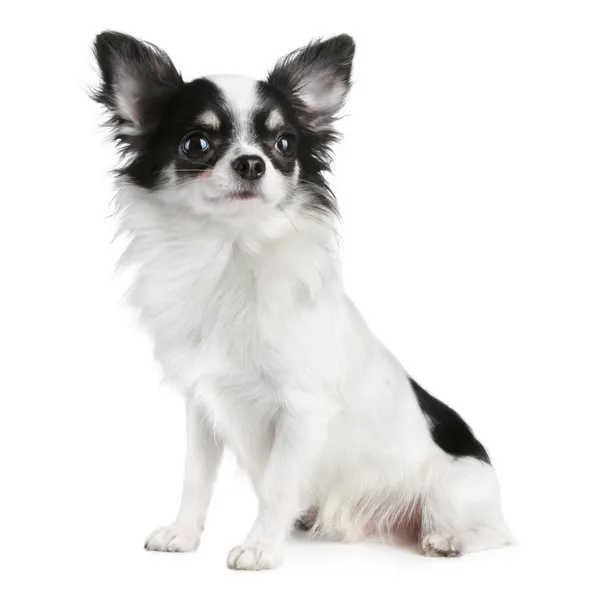
Health Of Chihuahua
Although the Chihuahua has no significant health issues, like all breeds, he may be born with or develop certain conditions. Although not all Chihuahuas will develop any or all of these diseases, it’s important to be aware of them so you can be prepared when you interview breeders and know what to look for over the course of your Chihuahua’s lifetime.
You can ensure that you get the healthiest Chihuahua possible by purchasing from a reputable breeder. Before you bring home a puppy from a reputable Chihuahua breeder, he will have received his shots and deworming. Responsible breeders only use physically healthy, mature (at least 2 years old) dogs and test their breeding stock for genetic disorders specific to the breed, such as luxating patellas (bum knees) and heart disease.
If a dog has been tested for and declared free of a specific condition, both parents should have that documentation. You should anticipate seeing Orthopedic Foundation for Animals (OFA) patella and heart disease clearances in Chihuahuas. You can check the OFA website (offa.org) to confirm health clearances.
Dogs under the age of two are not given health clearances. This is due to the fact that some health issues don’t manifest themselves until a dog is fully grown. For this reason, it’s frequently advised that dogs wait to breed until they are two or three years old.
The following conditions may affect Chihuahuas:
- Patellar Luxation: Also known as “slipped stifles,” this is a common problem in small dogs. It results from the patella, which is composed of the femur (the thigh bone), the patella (the knee cap), and the tibia (the calf). This results in a skip or a hop in the gait or lameness in the affected leg. Despite the fact that the actual misalignment or luxation does not always happen until much later, the condition is present at birth. Arthritis, a degenerative joint disease, may develop as a result of the rubbing that patellar luxation causes. There are four levels of patellar luxation, from grade I, a rare luxation that only temporarily impairs the joint, to grade IV, where the tibia is severely turned and the patella is incapable of being manually realigned. The dog appears to have bowlegged legs as a result. Surgical correction may be necessary for severe grades of patellar luxation.
- Hypoglycemia: With all puppies from toy breeds, hypoglycemia, or low blood sugar, is a potential issue. [Nota bene: I’ve left this as a toy breed. There is a distinction between small and toy dogs, such as between Chihuahuas, Yorkies, Beagles, and Miniature Dachshunds.] If treated early on, hypoglycemia can be easily managed, but if not, it can be fatal. Because this condition can occasionally be misdiagnosed by veterinarians as viral hepatitis or encephalitis, it is crucial that breeders and owners of toy breed puppies understand the signs and symptoms. In addition to slowing down and becoming listless, a puppy with hypoglycemia may also tremble or shiver. Get him to the vet right away and put some honey under his tongue. If the condition is allowed to persist, he will eventually pass out, experience convulsions, lapse into a coma, and pass away. An emergency situation exists whenever your Chihuahua is limp and has grayish-blue gums and a tongue. Toy puppies can develop hypoglycemia if they don’t eat frequently or when they don’t have enough fat reserves to supply enough glucose when they are under stress.
- Heart Murmurs: Blood flow through the heart chambers is disturbed, which results in heart murmurs. They serve as a warning sign that a heart condition or disease might exist and should be watched over and managed. One is considered to be very soft, and five is considered to be extremely loud when grading heart murmurs. The dog might need medication, a special diet, and less exercise if the disease is obvious, as determined by x-rays and an echocardiogram.
- Pulmonic Stenosis: This congenital heart disease happens when the pulmonic valve is deformed, obstructing blood flow through the heart. As a result, the heart may have to pump more forcefully and grow bigger, which can cause heart failure. The disease’s severity determines how it will be treated. There is little to no obstruction in mild cases, so no treatment is required. Surgery is advised if the disease has severely affected the dog, but the process depends on where the blockage is located.
- Collapsed Trachea: The rapid inhalation of air flattens the trachea and makes it difficult for air to enter the lungs, much like when too much force is applied to a soda straw. It is unclear exactly how this happens. Dogs with this condition exhibit an abnormality in the chemical composition of their tracheal rings, which causes the rings to lose their stiffness and lose their ability to maintain their circular shape. This condition may be inherited; it occurs in certain breeds.
- Hydrocephalus: Because of a congenital flaw, an obstruction, or the effects of trauma during birth, cerebrospinal fluid (CSF) can build up in the brain and put pressure on it. The diagnosis can be verified with an ultrasound if necessary, despite the fact that the head appears swollen or enlarged. Although mild cases of the condition can benefit from the use of steroids to lower fluid pressure, hydrocephalus has no known cure. A shunt can also be used to direct fluid away from the brain and toward the abdomen. It’s a good idea to wait to get a Chihuahua until it is four months old because puppies with severe cases typically pass away before that age.
- Open Fontanel: Chihuahuas have a soft spot on the top of their heads at birth. Normal closure of the soft spot, similar to a baby’s will, does not always occur. Handle these dogs with caution. They can pass away from a careless blow to the head.
- Shivering: In Chihuahuas, shivering frequently occurs. Uncertainty surrounds the mechanisms underlying their trembling or shivering, but it frequently happens when a dog is overexcited, under stress, or in the cold.
Care Of Chihuahua
Despite being a small dog, the Chihuahua still requires training and exercise. It may surprise you how much energy an adult Chihuahua has. In the backyard, he will chase squirrels incessantly and is eager to play as long as you are. Chihuahuas enjoy strolls, supervised yard romps, and toy retrieval. It’s critical to prevent overexertion in them because they’ll keep going until they drop, especially on hot days.
Chihuahuas should never live outside, despite the fact that they love to play outside. They are not protected from large dogs or raptors like hawks or coyotes that might enter your yard. They were raised to be companions, and you are the ideal environment for a companion.
Chihuahua training can be a fun task. Even though they excel in companion dog sports like agility and obedience, Chihuahuas also excel in puppy kindergarten and basic obedience classes. Your Chihuahua will socialize with many different dogs and people in class and learn the manners that all dogs should know.
When taken outside frequently and according to a regular schedule, Chihuahuas are just as simple to housetrain as any other breed. Puppies should be taken outside as soon as they wake up in the morning, after every meal, after naps, after playtime, and right before bed. When you can’t watch them, putting them in a crate will teach them to control their bladder and stop them from having accidents in the house. If they are not crated, schedule time to let them out every one to two hours, and avoid crating them for longer than two to four hours at a time unless overnight.
Crate training is a gentle way to make sure that your Chihuahua doesn’t get into things he shouldn’t, in addition to housetraining. Chihuahuas can be destructive as puppies, just like any other dog. Although they might not cause as much harm as a Lab puppy, those tiny teeth can leave their mark. If your Chihuahua ever needs to be boarded or hospitalized, having been crate trained from a young age will help him accept confinement. But don’t confine your Chihuahua to a crate all day. Except for when he is sleeping at night, he shouldn’t stay there for longer than a few hours at a time. Chihuahuas are small dogs that belong with their owners and are not intended to live their entire lives in a kennel or crate.
Use positive reinforcement techniques to train your Chihuahua, such as food rewards, praise, and play, and you’ll soon discover that he can pick up anything you can teach.
Feeding Of Chihuahua
Recommended daily amount: 1/4 to 1/2 cups of high-quality dry food a day
NOTICE: Your adult dog’s caloric needs are influenced by his size, age, build, metabolism, and level of activity. Like people, dogs are unique creatures with different nutritional needs. A highly active dog will require more than a couch potato dog, which almost goes without saying. A significant factor is the quality of the dog food you purchase; the better the food, the more effectively it will nourish your dog and the less you will need to shake into the bowl.
See our recommendations for selecting the best food, feeding your puppy, and feeding your adult dog for more information on feeding your Chihuahua.
Coat Color & Grooming Of Chihuahua
Both smooth and long coat varieties are available in chihuahuas. A ruff of thick, longer hair is present on the neck of the smooth-coated Chihuahua, which has a shiny, close-fitting coat. The tail is furry and the head and ears have finer hair.
A soft, flat or slightly curly coat is on the long-coated Chihuahua. On the body, it is almost as smooth as a Chihuahua with a smooth coat, but the ears are hairier, and the plumed tail spreads out over the back like a fan. He also has feathering, or longer hair on his feet, and a ruff around his neck. It’s called pants hair because the hind legs are also covered in long hair that resembles pants. Longer hair, referred to as a frill, is present on the stomach.
Chihuahuas can be found in a variety of colors and markings in addition to having two different coat types. They can have one solid color, such as black, white, fawn, chocolate, gray, or silver, or they can have a tricolor pattern, such as chocolate, black, or blue with tan and white, or they can have a variety of other markings, such as spots, brindles, or merles. All colors have shades that range from very light to very dark.
The Chihuahua is an easy-going breed of dog. Each week, grooming him only takes a few minutes. If your Chihuahua has short hair, brush him once a week with a pin brush; if yours has long hair, use a rubber grooming mitt. A flea comb with fine teeth can help get rid of any loose or dead hair.
Chihuahuas shed sparingly all year long and occasionally more heavily (for a dog this small) in the spring and fall. The undercoat of a Chihuahua with long hair may shed in small clumps. Shedding can be controlled with regular brushing.
A Chihuahua should only require a bath every month or two if it is regularly brushed. To avoid drying out the skin and coat, use a shampoo designed for canines.
When you are grooming your Chihuahua, it is important to pay attention to the ears. Use a cotton ball and a cleanser suggested by your veterinarian to clean the inner ear if you notice wax or smell an odor. Don’t go past your field of vision into the depths of the ear. Rub a little coconut or baby oil on the ears if the edge is dry.
Under their eyes, some Chihuahuas get tear stains. In addition to products that can be used to remove the stains, you can carefully wipe the eyes to remove any discharge.
Nails on Chihuahuas develop quickly. Keep them trimmed short. They are too long if you can hear the floor clicking when you step on them. The process of trimming your Chihuahua’s nails will be less stressful the earlier you start. Examine the pads simultaneously for any injuries or foreign objects.
Chihuahuas are susceptible to dental disease, like many small breeds. The maintenance of a healthy mouth can be aided by brushing teeth. To get rid of tartar and bacteria, brush your teeth at least twice a week, ideally every day. Start early so that your puppy will become accustomed to it.
While grooming, keep an eye out for sores, rashes, or infection-related symptoms like redness, tenderness, or inflammation on the skin, in the ears, nose, mouth, or eyes, as well as on the feet. There shouldn’t be too much wax or gunk in the ears, and the eyes should be clear and without any discharge or redness. You can identify potential health issues early on thanks to your thorough weekly exam.
Highlights
Select a breeder of Chihuahuas who offers patella and heart clearances.
- Expect to care for a Chihuahua for up to 18 years because they live long lives.
- Shivering is a common symptom of cold, excitement, or fear in chihuahuas. If it’s cold or rainy outside, give your Chihuahua a sweater or coat to wear.
- If they are not socialized as young dogs, chihuahuas may not be friendly to other canines. When confronted by an aggressive large dog, Chihuahuas don’t back down, which can be problematic.
- Don’t leave your Chihuahua in the yard alone. A hawk, other raptors, large dogs, coyotes, or other animals could all attack him.
- Chihuahuas can be wary around strangers. Select a puppy that was born and raised in a household with lots of human contact.
- Chihuahuas are not the best dog to have when you have young children. Chihuahuas are weak, so a child playing with one might accidentally hurt it. Most breeders won’t offer puppies for sale to families with children under the age of eight.
- Ear wax buildup and dry skin can be problems for Chihuahua ears.
- Chihuahuas are happy as companions, but they do need 20 to 30 minutes of exercise daily and can go for much longer than you might expect. Keep an eye on your Chihuahua so he doesn’t exhaust himself, especially when he’s a puppy.
- If you let them, chihuahuas will rule your life and have personalities that are bigger than life. If their diet is fussed over, they may develop picky eating habits and become destructive when bored. Establish ground rules and stick with them or you’ll find yourself giving up your comfortable chair because your beloved pet has told you to move.
- Never get a puppy from a backyard breeder, a puppy mill, or a pet shop if you want a healthy pet. Look for a reputable breeder who evaluates the temperament and genetic health of her breeding dogs.
Conclusion
A few of the charms of the Chihuahua dog breed are their small stature, big personalities, and variety of coat types and colors. They are among the top ten watchdogs that professionals recommend, are all dogs, and are fully capable of participating in dog sports like agility and obedience.
These dogs may still be found in shelters and rescues even though they are purebred. Remember to adopt! To bring a dog home, avoid shopping.
Even inexperienced pet parents know that nothing makes a Chihuahua happier than being with their owners, and they only need the barest amount of grooming and exercise. They make wonderful apartment dogs that get along with the entire family. Just make certain that any kids who come over understand how to play gently with a small dog.
Regarding your reading, I thank you.

